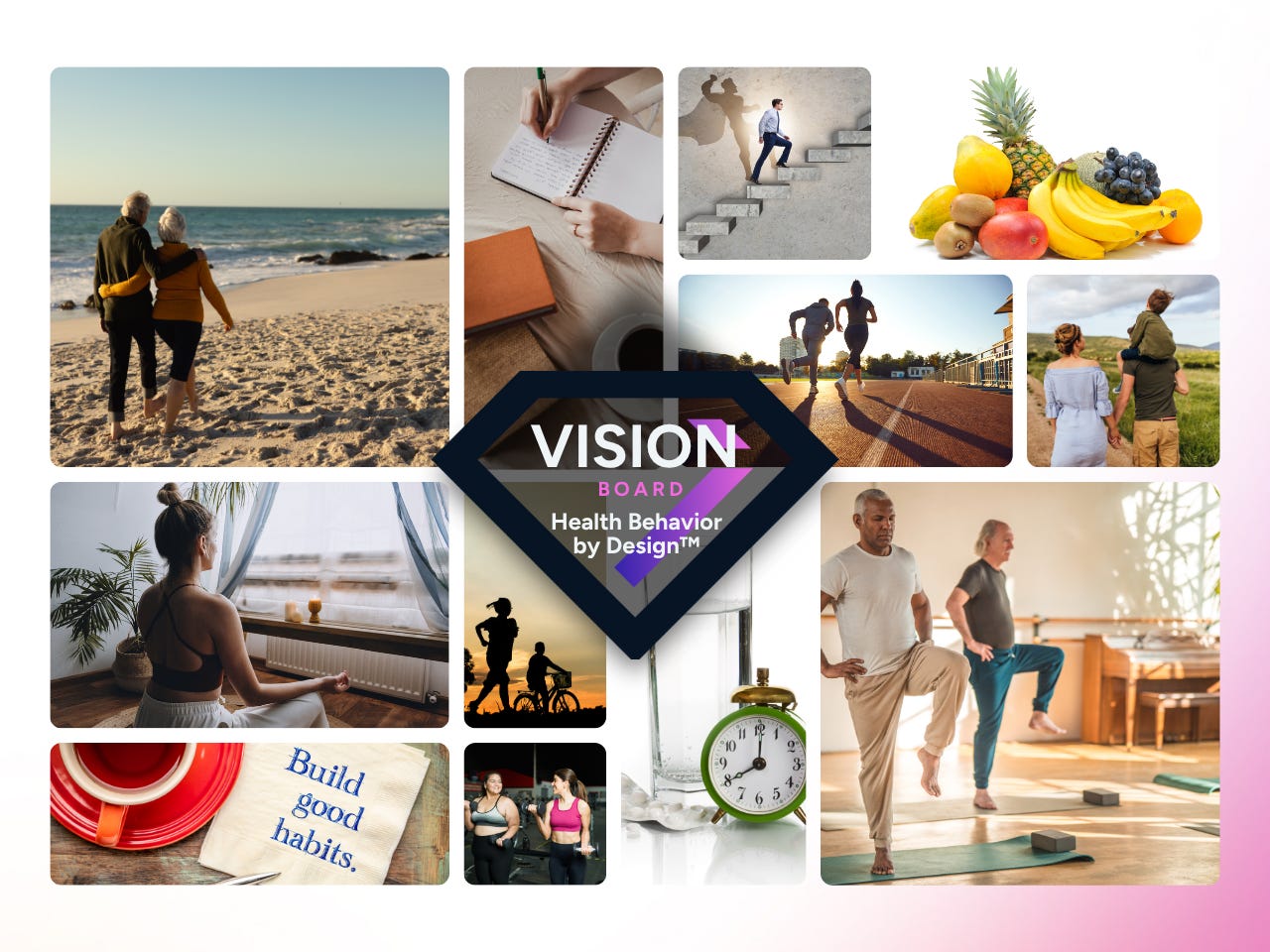How a Vision Can Help Someone Start (When They Can’t See it Yet)
“You can't be what you can't see.” — Marian Wright Edelman
Ever made a vision board? If so, you know the drill: scissors, magazines, and all that energy and optimism. Or Pinterest, a digital user’s vision board dream! Maybe you’ve made one for your upcoming wedding, home reno, or to decide your next hairstyle.
Believe it or not, when it comes to enabling health behavior change, making a vision board is one of the most effective ways you can empower yourself and your person.
Because when someone is stuck, when your loved one can’t or won’t do something to help themselves, sometimes it’s because they can’t imagine themselves as "healthy" or "a person who exercises," or "someone who eats well." When someone is stuck, they don’t need to be told what to do, instead they need to feel something. They need to see that change is possible.
This is where visioning and imagery come in. Two powerful and proven psychological techniques that bridge the gap between where someone is now and where they wish to be.
What’s in a vision
Visioning is the intentional practice of mentally picturing a future desired state. Think of visioning like your brain’s vision board, with as much glitter and grit as you can conjure up. It’s about clearly picturing the version of life you want to live. It serves as a motivational tool because aligns current behaviors with long-term health goals. Visioning is used to foster a sense of purpose and direction. It’s about picturing what life feels like when the desired behavior has taken root.
What is imagery
If visioning is the big picture, imagery is the scene that plays out in your mind to make the vision a reality. It can include tapping into all senses — visual, auditory, tactile, olfactory, and gustatory — while you imagine future events, actions, or tasks. It involves seeing and feeling the moments that build a healthy lifestyle:
Choosing fruit at the market.
Saying “no thanks” to the third slice of pizza.
Feeling your legs move on a morning walk.
Getting up from the couch with ease.
It’s where you mentally rehearse these specific actions, so when the time comes, they feel familiar and natural.
Making a vision board is how you practice these techniques
Think of visioning and imagery as the activities that help build out a vision board for health. By practicing them, you:
Lower cognitive resistance: If you can envision something, it feels less foreign and scary.
Create emotional attachment to success: Imagery helps people feel the positive emotions of change before they arrive, just like looking at a dream vacation photo makes you excited to go.
Increase resilience and confidence: Imagery allows people to mentally practice success, which makes them more likely to take real-life action later.
Research in health psychology and sports science shows that when people consistently imagine how they will do something, they perform better and follow through more often.
But if your person is stuck, it’s highly likely they cannot practice these things. Health Starters usually can’t see themselves as healthy. They won’t be able to make a vision board. And if you continue to feel beaten down by attempts to inspire them, you may need something to keep you going too. So YOU can make a vision board to represent their change.
That’s what this is — a way to represent their change in a sustainable way.
How you can practice visioning
Picture a moment you care about with your person: Imagine scenarios that are emotionally important, not generic healthy goals like walking. Choose moments that you can easily feel. For example, walking on the beach with the kids or grandkids in the summer.
Write a future-self letter: Write a short letter on their behalf from their future self to their current self. Describe what’s different now, how they feel, and what daily life looks like. What have they accomplished?
Create your vision board: Collect photos, objects, or drawings that symbolize what you hope for them. Just make sure these items are in places where you’ll see them often.
How you can practice Imagery
Micro-moment mental rehearsals: Imagine the next time you have a conversation with your person, and mentally walk through the conversation step-by-step.
Cue-based visualization: Imagine your interactions with them in everyday moments, like when you first see each other in the morning or before a meal. Watch the scene unfold in your mind the way you want it to go.
You Hold the Vision, Until They Can
Visioning and imagery won’t replace action, but they can precede them. When your person can’t see the better version of themselves yet, you can see it for them. You can hold that vision of them being healthier and you being happier. Place it on a vision board until they’re ready to step into it themselves.
Your story belongs here!
Has something I’ve written sparked a memory or made you think about someone you care for? If you’ve had a meaningful experience supporting a loved one, whether a parent, partner, friend, or child, I invite you to share it. It could be joyful, heartbreaking, messy, or beautifully mundane. This is a space for real voices and real experiences, and I’d be honored to include yours in a future Substack post!
👉Click here to share your story.
Interested in my work? Let’s connect!
📲 Follow me on LinkedIn for more insights and behind-the-scenes, or reach out if you’re interested in working together!
💌 Reach out to me at drstephhabif@gmail.com for ways to work together!
🖥️ Read more on my website


